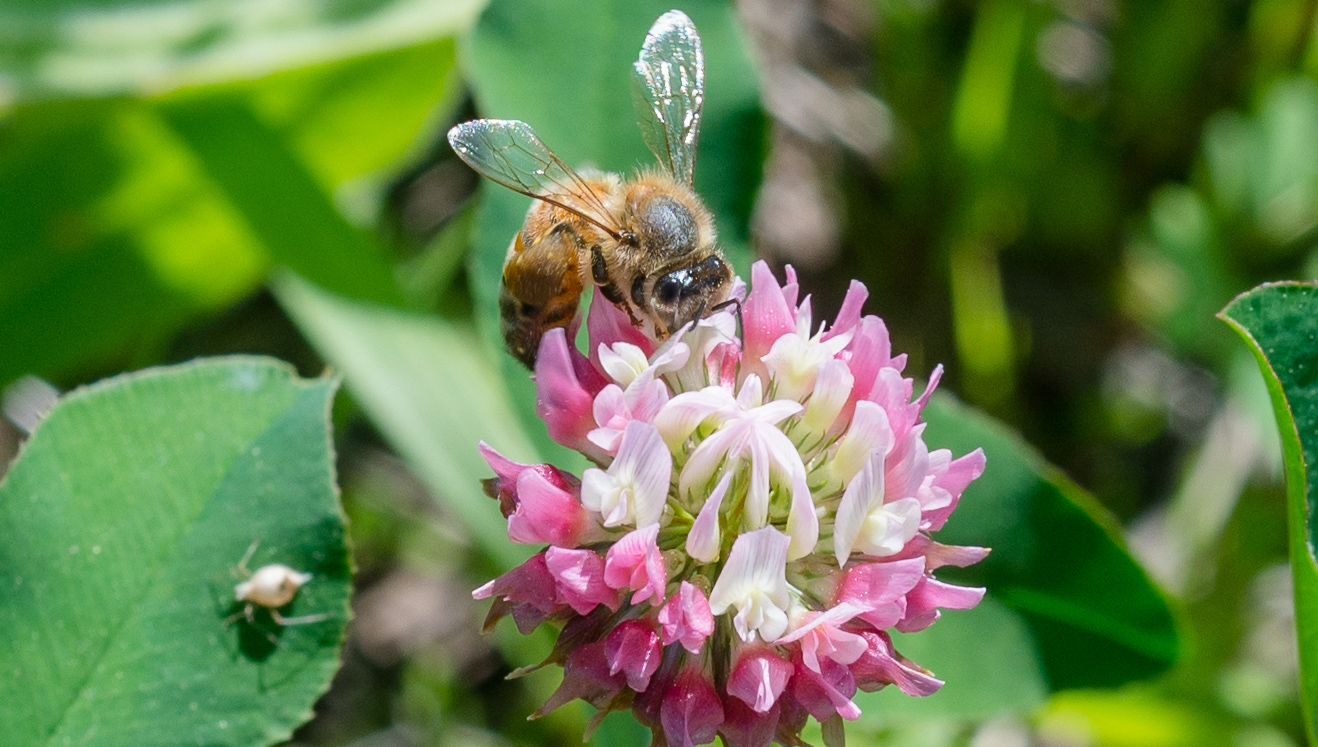
The Iowa Soybean Association and a variety of partners, including Syngenta, are working together to restore habitat in Iowa for the rusty-patched bumble bee. (Joseph L. Murphy/Iowa Soybean Association)
Stopping a vanishing act
June 9, 2020
This article is part two of a three-part series by Darcy Maulsby, an ISA Communications contributor.
ISA, farmers restore habitat for rusty-patched bumble bees
We protect the things we value. But how can we care about something we barely know?
That’s the key question driving the online documentary “A Ghost in the Making: Searching for the Rusty-Patched Bumble Bee,” a story that resonates in Iowa.
The Iowa Soybean Association (ISA) and a variety of partners, including Syngenta, are working together to restore habitat in Iowa for the rusty-patched bumble bee, which was added to the endangered species list in 2017.
“The rusty-patched bumble bee is under pressure because it needs blooming plants from early spring to late fall to feed,” says ISA conservationist Corey McKinney. “Those ideal habitats have become increasingly scarce.”
What makes the bee so important is its ability to pollinate a variety of Iowa crops and wildflowers. It’s also a long-season bee species, meaning it emerges in early spring and doesn’t hibernate until late fall.
This native pollinator was among the most common bumble bees in the Midwest in years past, including eastern Iowa. Today, however, rusty-patched bumble bees are found consistently in only a few spots, mostly near urban areas. In Iowa, they tend to be found on the eastern side of the state near Iowa City.
It’s important to pay attention to the decline of the rusty patched bumble bee, because a region’s pollinator population indicates the overall health of the ecosystem, says Caydee Savinelli, stewardship team and pollinator lead at Syngenta.
“There’s been a lot of attention focused on Monarch butterflies, which is great, but we shouldn’t get so narrowly focused on just one species,” adds Savinelli, who notes there are almost 4,000 species of wild bees in North America. “When we help the rusty-patched bumble bee, we help other pollinators, too.”
Balancing farming, conservation
It’s unclear what caused the rusty-patched bumble bee populations to crash, but some experts believe it was triggered by a combination of disease and habitat loss. The bees’ dramatic decline has been observed even in protected areas like national parks.
ISA has been working with Syngenta and the Iowa Department of Natural Resources (DNR) to restore pollinator habitat along timbered areas in eastern Iowa. In 2019, DNR employees seeded habitat near Oxford, Iowa, to encourage the rusty-patched bumble bee to flourish in the area. Specialists from ISA and Habitat Forever (through Pheasants Forever) also planted a dozen pollinator habitats in priority zones near Iowa City and Ames in 2019 to benefit the rusty-patched bumble bee.
Syngenta provides technical expertise and other resources to help farmers and other landowners implement more of these conservation practices. “It’s all about finding balance between farming and protecting the environment,” Savinelli says.
This fits with the Good Growth Plan at Syngenta, which is designed to help biodiversity flourish and increase the sustainability of modern agriculture. This includes Operation Pollinator, a research-based program that Syngenta has embraced for more than 20 years to restore pollinators in agricultural, golf and other landscapes by creating essential habitats.
“It’s not enough to talk about the importance of pollinator habitat,” Savinelli notes. “Demonstrating success is key.”
Growing new opportunities
To maximize success, ISA and its partners follow research-based protocols as they restore habitat for the rusty-patched bumble bee. It all starts with site preparation and selecting the right seed.
“Site preparation involves controlling weeds and can take up to a year before the pollinator habitat is seeded,” McKinney says.
Next, McKinney and his colleagues write seeding “prescriptions.” They work with Midwest-based Conservation Blueprint, which provides custom seed mixes. Owner Pete Berthelsen is a renowned wildlife conservationist and pollinator habitat expert who can assist with project design and habitat consultations.
Mixes for pollinator habitat in Iowa often include black-eyed Susans, milkweed, bee balm, asters, coneflowers, yarrow and goldenrod. “These mixes are designed to attract a variety of pollinators and increase biodiversity,” Savinelli says.
After a site is seeded and pollinator habitat begins to grow, it’s important to mow the site for the first couple years. This controls weeds and allows the prairie plants to become established by growing roots deep into the soil. McKinney says plants begin flowering within five years of seeding.
Some of the pollinator plots planted by ISA and its partners are located adjacent bicycle trails, while others are located on Iowa farms. “This is a new opportunity for agriculture to add value and benefits to their non-working ground,” McKinney says.
ISA and its partners continue to seed more acres in Iowa to benefit rusty patch bumble bees and other pollinators.
Syngenta is excited to support ISA’s efforts, Savinelli says.
“It’s all about continuous improvement to preserve the land and make it better.”
For more information or to discuss habitat restoration opportunities and suitability, contact ISA’s McKinney at cmckinney@iasoybeans.com or 515-334-1077.
Back